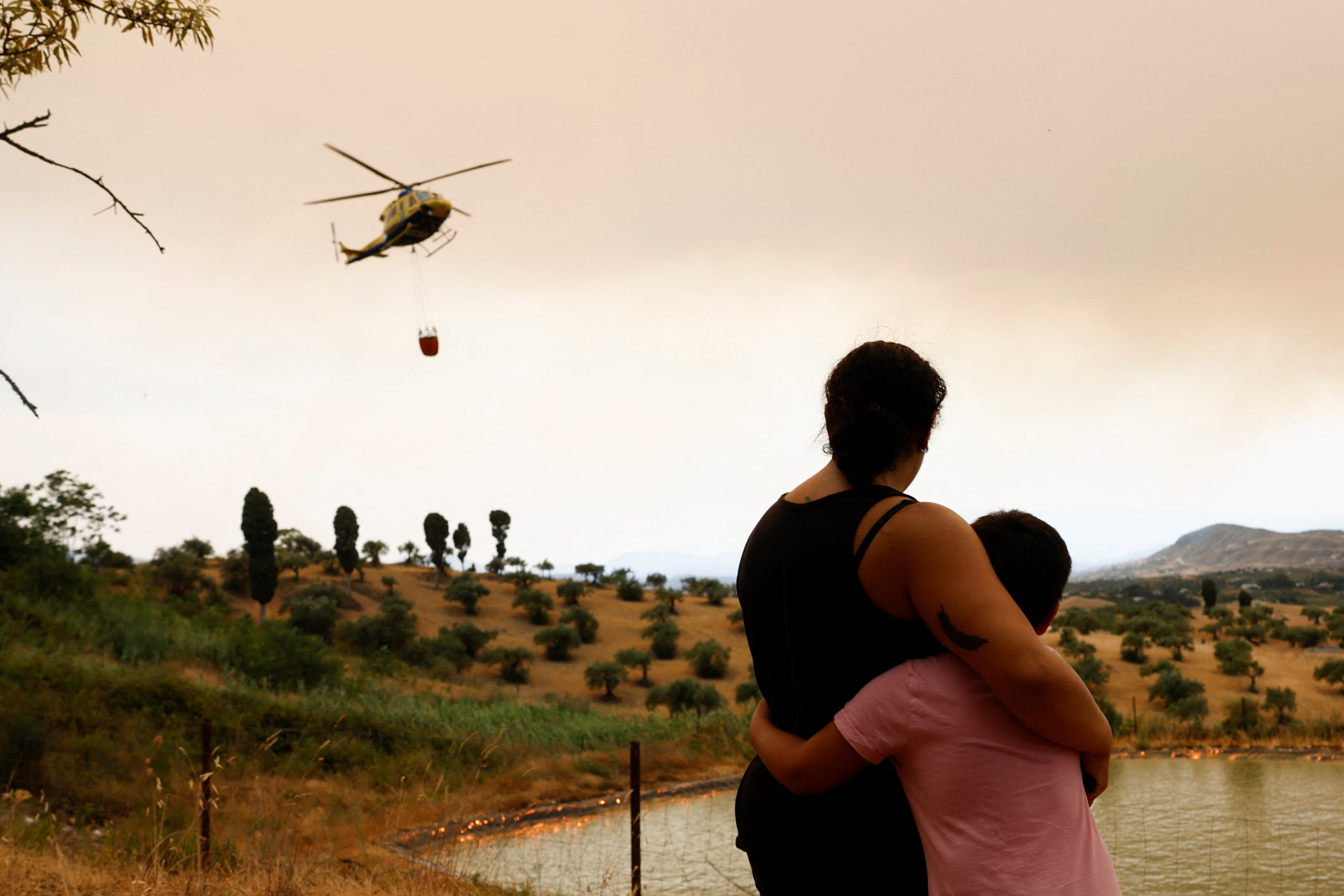
[elfsight_social_share_buttons id=”1″]
A heatwave sweeping southern Europe that has caused hundreds of deaths and driven huge wildfires in past weeks showed some signs of abating on Monday but continued to move north towards Britain, where authorities issued an extreme weather warning.
Much of Europe is baking in a heatwave that has pushed temperatures to more than 110 degrees Fahrenheit in some regions, with wildfires raging across tinder-dry countryside in Portugal, Spain, and France.
France’s Prime Minister Élisabeth Borne last week blamed the fire in the La-Teste-de-Buch region on an electric vehicle that had some sort of issue and sparked the fire in a wooden glen.
Temperatures in some parts of southern Europe began to ease over the weekend but thousands of firefighters across the region still battled to contain hundreds of wildfires and authorities said the risk of further blazes remained extremely high.
Spain was facing the eighth and last day of a more than week-long heatwave on Monday, which caused more than 510 heat-related deaths, according to estimates from the Carlos III Health Institute.
With fires burning thousands of hectares in Galicia, Castille and Leon, Catalonia, Extremadura, and Andalusia, Spain mourned the death of one firefighter in the northwestern province of Zamora on Sunday evening. Almost the entire country faces an extreme fire risk.
“There are never words to thank the immense work of those who fight the fires tirelessly,” Prime Minister Pedro Sanchez said on Sunday night in a condolence message on Twitter.
More than 70,000 hectares (173,000 acres) have burnt in Spain so far this year, the worst year of the last decade, according to official data. Last month, a huge wildfire in Sierra de la Culebra, Castille, and Leon, ravaged about 30,000 hectares of land.
Spain also reported a second death caused by a wildfire after a fireman died on Sunday. A 69-year-old was found dead on Monday in Ferreruela, in an area burned by flames, emergency authorities said. Local media said it was a farmer.
In Portugal, temperatures dropped over the weekend, but the risk of wildfires remained very high across most of the country, according to the Portuguese Institute of Meteorology (IPMA).
More than 1,000 firefighters, backed by 285 vehicles and 14 aircraft, were battling nine ongoing wildfires, mainly in the country’s northern regions, authorities said.
National emergencies
Belgium and Germany were among the countries expecting the heatwave to hit them in coming days.
Britain was on course for its hottest day on record on Monday with temperatures forecast to hit 104 degrees Fahrenheit for the first time, forcing train companies to cancel services, schools to close early and ministers to urge the public to stay at home.
The government has triggered a “national emergency” alert as temperatures were forecast to surpass the 102F recorded in the Cambridge University Botanic Garden in 2019 on Monday and Tuesday.
“We hoped we wouldn’t get to this situation but for the first time ever we are forecasting greater than 102F in the U.K.,” climate attribution scientist at the Met Office, Dr. Nikos Christidis, said.
In France, wildfires had spread over 11,000 hectares(27,000 acres) in the southwestern region of Gironde, and more than 14,000 people have been evacuated, regional authorities said on Sunday afternoon.
More than 1,200 firefighters were trying to control the blazes, the authorities said in a statement.
France issued red alerts, the highest possible, for several regions, with residents urged “to be extremely vigilant”.
In Italy, where smaller fires have blazed in recent days, forecasters expect temperatures above 104F in several regions in the coming days.
Switzerland also suffered the effects of the heatwave. Axpo, the operator of the Beznau nuclear plant, said on Monday it was forced to reduce output so that it does not overheat the Aare River from which it draws its cooling water.
Copyright 2022 Thomson/Reuters
